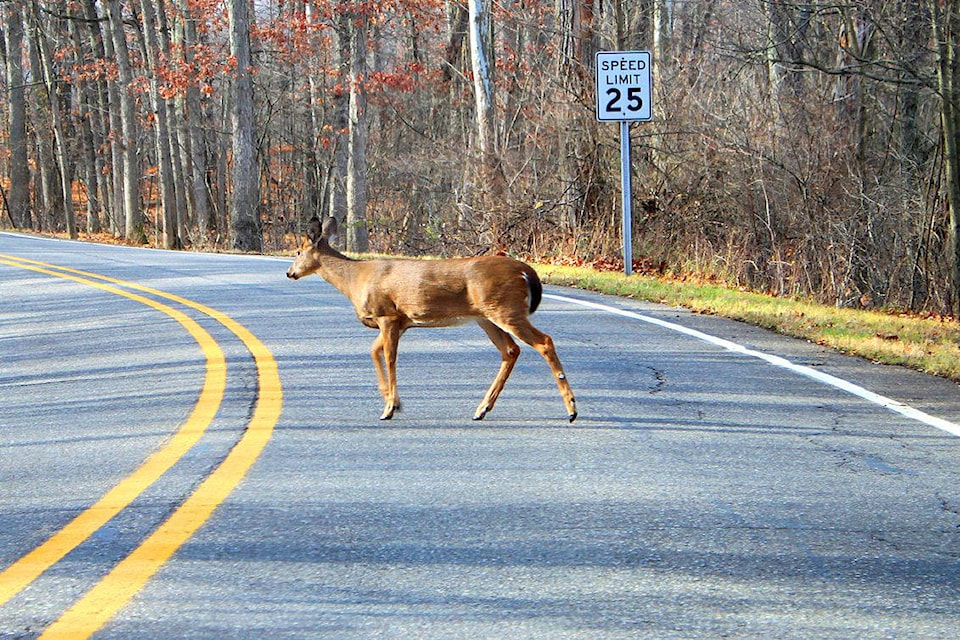The provincial government has been testing out innovative solutions to help prevent wildlife crashes in B.C., according to the Ministry of Transportation and Infrastructure.
These include salt-lick stations to steer mountain goats away from Hwy. 31, a north-south highway in the southeastern corner of the province, and using dog hair to deter bighorn sheep away from roads in the Kootenays.
As these programs are monitored, the province may consider implementing them in other parts of the province, said Danielle Pope, a spokesperson for the ministry.
An average of 11,000 wildlife collisions occur across the province every year, according to ICBC’s most recent statistics.
The southern Interior is the worst for animal crashes, with 4,800 collisions annually, while the north-central region sees an average of 2,700 wildlife crashes each year.
To increase safety in northern B.C., several bridges have been raised to allow wildlife to cross underneath the structure and safely avoid roadways, and numerous signs have been installed to warn drivers of high wildlife areas, according to the ministry.
In addition, several mineral licks — areas adjacent to highways where natural salts collect and where animals congregate to consume the salt — have been deactivated to protect wildlife. Ministry staff deactivate them by fencing off the area or adding rock material to make it harder to access the salt.
In other parts of B.C., several other measures have been implemented.
On Hwy. 3, located near the U.S. border, there are two wildlife detection systems, which warn drivers about animals on or near the road using thermal cameras and radar sensors that trigger flashing warning signs.
Collision data has showed that these flashing signs are working as there are reductions in wildlife collisions along these sections of highway, Pope said.
Other safety measures include exclusion fencing and wildlife overpasses and underpasses, which have been shown to work well for deer, moose, elk, bears and wolves.
Deer the main cause of collisions
Deer are the main cause of wildlife collisions on provincial highways and roads, accounting for approximately 85 per cent of these crashes, according to the ministry.
In the Lakes District, about 15 deer collisions occur each month in the spring and early summer, and an average of 30 take place each month between October and December, according to estimates from the BC Conservation Foundation.
Dusk and dawn are the worst times for these crashes.
Avoiding collisions
To avoid wildlife collisions, the BC Conservation Foundation recommends drivers watch for signs and reduce their speed. Driving at a slower speed may mean it is not necessary to swerve, which can take cars into the path of an oncoming vehicle or into the ditch.
If a deer is in your way, the foundation recommends using your brakes, not your wheel.
But if you’re choosing between swerving or striking a moose, consider swerving. A collision with a moose, which can weigh up to 1,200 pounds, carries a significant risk of injury or death to motorists and passengers.
But if a crash with a moose is inevitable, the foundation recommends crouching as low as possible in your seat or under the dash, as a moose’s body usually ends up crushing the roof of a car completely flat.
